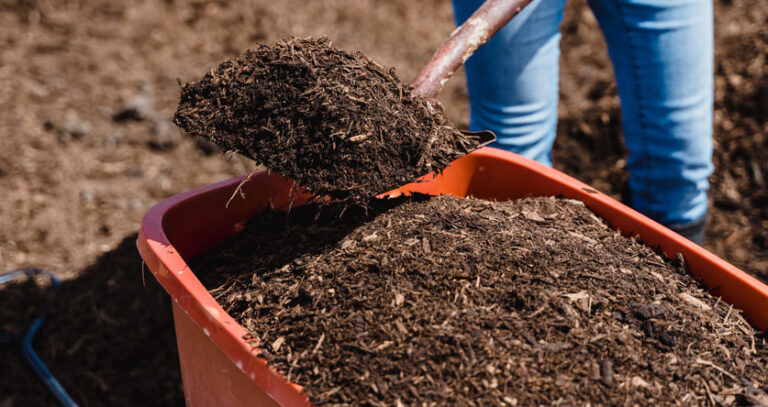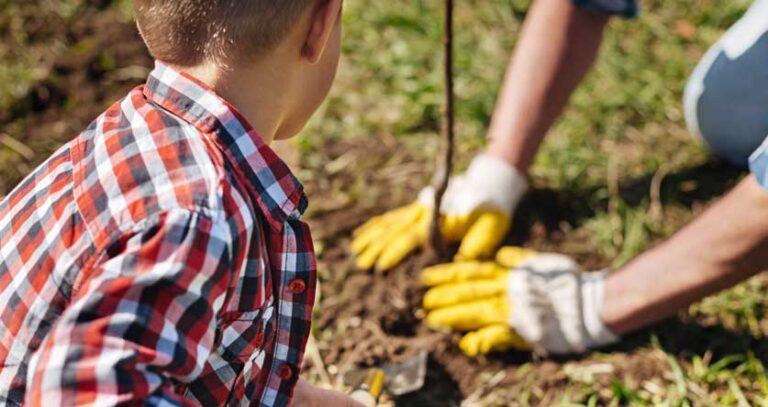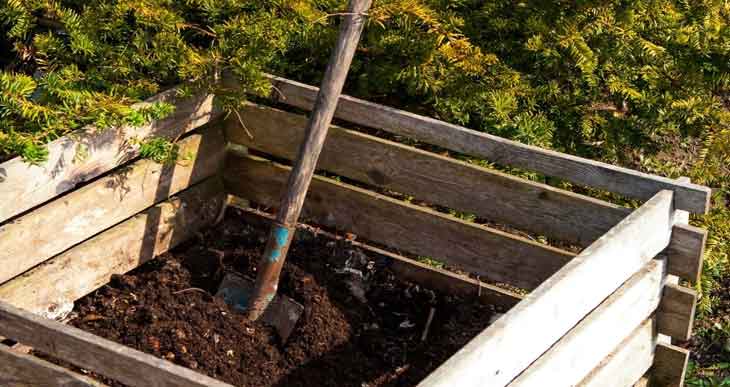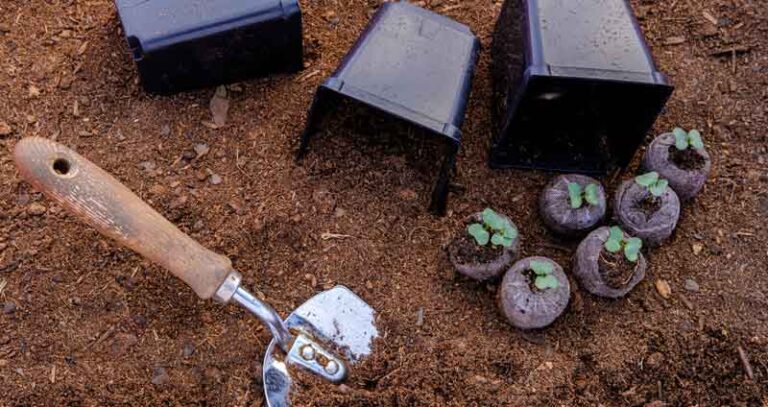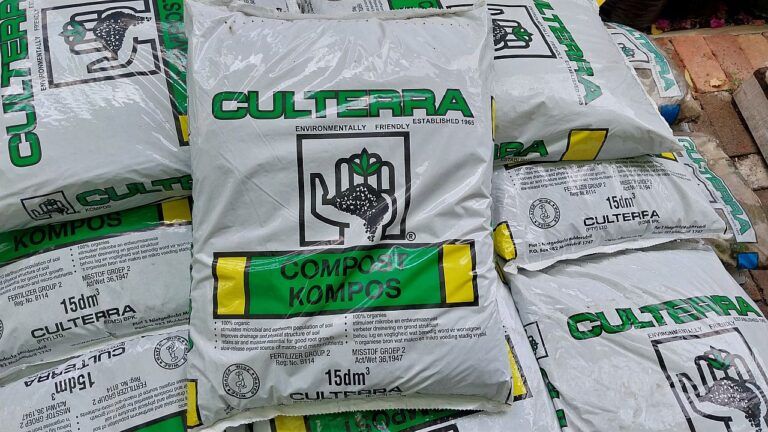The Best Compost for Clay Soil (Tips to Help You Get Started)
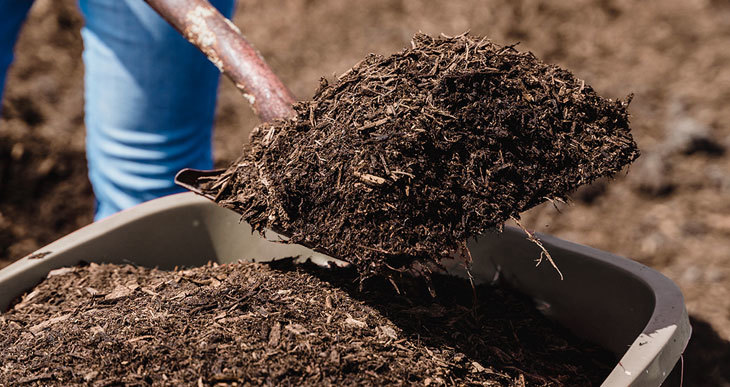
Clay soil can be a challenge for gardeners. I’ve lost my boot more than once in clay soil!
But with the correct compost and amendments, you can make it work for you.
If you live in an area with inferior soil quality, you may have to amend it heavily to get your plants to grow. If you have clay soil, it’s essential to use compost that will help improve drainage and support nutrient uptake.
In this blog post, I’ll discuss the best compost for clay soil and give you tips on getting started!
What compost is best for clay soil?
The best type of compost for clay soils is mature compost with lots of bulk and coarse organic matter. In addition, a high humus content is advantageous. This will considerably improve the workability of clay.
Mature compost has the advantage of being applicable in any season. If it’s had time to cure, you’ll be left with a stable, humus-rich substance. This improves aeration and drainage in clay soils.
Clay soils are heavy and compact because they’re made up of tiny soil particles. As a result, they hold on to water more than other types of soils. Unfortunately, this means they don’t drain well and have a tendency to become waterlogged. But it’s not all bad news!
The density of this type of soil also means they hold on to nutrients better than others.
However, clay soils become very dry in the summer and can limit healthy root propagation.
The dense composition of clay is why most gardeners choose to cultivate and amend topsoil using compost.

Is leaf compost good for clay soil?
Leaf compost or leaf mold is made from dead, dry leaves left to decompose over a long period. This is an excellent amendment for clay soil types. Leaf compost is unique because it has a very effective humus content. This is just the kind of thing you need to add structure to clay soils.
Also, leaf mold is exceptionally absorbent and holds water very well.
When you mix leaf mold with dense soil, it helps create a better structure for root growth and promotes more balanced moisture levels in the soil so that it won’t become waterlogged.
Is mushroom compost good for clay soil?
The most significant part of mushroom compost is straw, hay, or other brown composting substances. These coarse materials produce compost that adds a good structure to clay soils. This makes mushroom compost a very helpful amendment for this type of soil.
However, mushroom compost can be high in salts. This can be problematic for some plants that are more salt sensitive.
If you do use mushroom compost, spread it early before the growing season. This will allow the soluble salts to leach away and reduce their impact.
Mushroom compost also contains gypsum or lime (calcium).
Some clay soils benefit from added gypsum, which makes the soils particles clump together (called soil flocculation). In some cases, this means mushroom compost has added usefulness for clay earth.
You can test your soil to find out its current status. Chalky soils are usually quite alkaline (pH of between 7 and 8)
A simple soil tester like this one will give you a better understanding of your soil’s existing alkalinity. (Amazon link)
Note: The gypsum in mushroom compost is high in calcium. Adding calcium (known as liming) reduces soil acidity. But don’t let this put you off using mushroom compost on clay soils. In fact, clay soils tend to resist changes in pH levels (known as the buffering capacity). So mushroom compost may only have a minimal effect on your soil’s pH levels.
What does compost do to clay soil?

Compost improves clay soils in several ways. As already mentioned, it helps to break up the dense clay particles and improve drainage. Compost also adds essential nutrients and organic matter to the soil. This is important for plant growth.
Organic matter in compost helps clay soils to retain moisture without becoming waterlogged. This is because organic matter acts like a sponge. It can absorb water and then release it slowly back into the soil. This is vital for plant roots which need a constant supply of moisture.
By improving the structure of clay topsoil, you also promote the activity of soil life like worms which results in better drainage and nutrient availability.
Compost also helps to regulate soil temperatures. In hot weather, it can help keep the roots of plants cool. In winter, it can help to insulate the roots and protect them from the cold
How much compost do I mix with clay soil?
It’s generally recommended to add 2 to 4 inches of compost to clay soil for every 6 inches of topsoil. This proportion of compost (between 1/3 up to 2/3) really depends on the quality of your soil.
Use your judgment, but you should also consider how much compost you have available.
How to mix compost into clay soil
It’s preferable to amend the soil before planting because it’s easier to do so before plants or crops are already in place. Also, do this when the ground isn’t too wet. Drenched soil is heavy and will make the work harder.
The best way to use compost on clay soil is to mix it with the existing soil. This can be done by hand or with a rototiller. If you are using a rototiller, make sure to go over the area several times to make sure the compost is mixed in well.
If you have a small area to cover, you can mix the compost and clay soil together in a wheelbarrow or other large container.
When adding compost to an existing garden bed, it can be challenging to work around existing plants. However, adding a good amount of organic compost on top of the soil in the autumn can be very beneficial (apply 1 to 2 inches as mulch).
It’s best to add a little bit each year to gradually change the soil composition.
Can you add too much compost to clay soil?

Clay soil can support a large amount of added compost, but it’s true that in some circumstances, compost can have a negative impact on plant growth.
For example, this happens when you use immature compost.
This type of compost is still decomposing, and the microbes responsible for this process need nitrogen to exist. Therefore, adding uncured compost can lead to a condition called “nitrogen lockout,” where plants can no longer absorb the nutrients they need for growth.
Also, excessive applications of manure-based compost can be problematic. Manure contains high levels of ammonium and salts. This can inhibit the uptake of other nutrients.
But don’t let this put you off.
In the majority of uses, compost will have a beneficial effect on the health of clay soils.
Conclusion:
There you have it! Everything you need to know about the best compost for clay soil. By following these tips, you’ll be on your way to improving your soil’s health in no time.
Thanks for reading!


